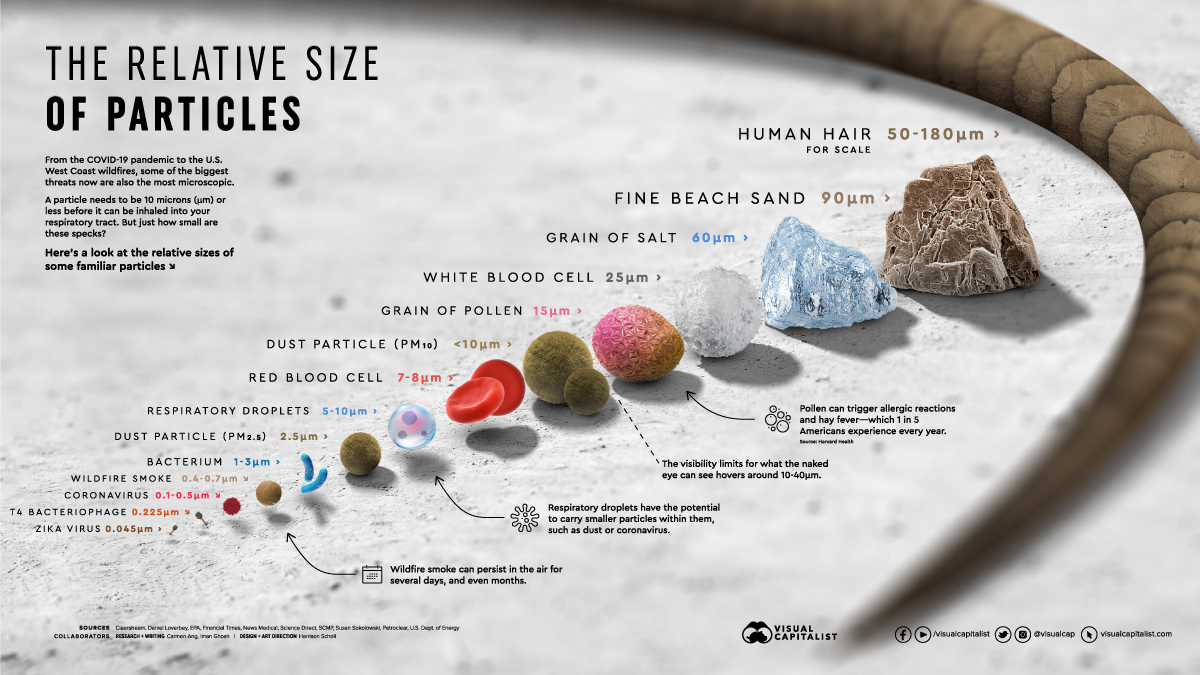With smoke in the air (at least for those of us on the US East Cost), the engineers at CM3 share their tips and product recommendations for purchasing portable air filtration systems.
EPA-Approved
Portable air filters are recognized by the EPA for helping to lower particle concentrations indoors. According to the EPA, “When wildfire smoke gets inside your home it can make your indoor air unhealthy, but there are steps you can take to protect your health and improve the air quality in your home. Reducing indoor sources of pollution [i.e., candles, tobacco products, aerosols] is a major step toward lowering the concentrations of particles indoors. . . Another step is air filtration.“*
More Filtration than HVAC Provides
You might think that the air filtration you have on your HVAC system is sufficient. However, portable air cleaners provide a level of filtration above the standard HVAC systems.
While many facilities have already moved their HVAC systems to MERV 13 filtration, on average, most facilities are limited to a MERV 8 or MERV 9 filter type. And, even with the upgraded filtration on newer systems, a MERV 13 will trap less than 75% of air particles that are 0.3-1.0 micron in size (wildfire smoke is 0.4 microns).
Compare that to HEPA filters, which are used in portable air cleaners. HEPA filters are at the highest MERV level and far exceed what a MERV 13 can do. In fact, all HEPA filters have a rating of a MERV 17 or higher. A HEPA filter with a MERV 17 rating will trap 99.97% of air particles that are 0.3-1.0 micron in size, which is why they are used in hospital operating rooms.
The below picture from VisualCapitalist.com illustrates particle size and the importance of selecting air cleaners with appropriate filtration:
5 Tips for Purchasing Portable Air Cleaners
- Size. Select devices that are appropriately sized for the space in which they will be used. This includes looking at room dimensions as well as air changes per hour (often noted as CADR, or clean air delivery rates. The CADR reflects, in cubic feet per minute, the volume of clean air that an air purifier produces on its highest speed setting.)
- Energy. Consider ENERGY STAR-certified products. These systems will likely be running most of the day, so energy efficiency should be a priority. Remember that products which use high-caliber, commercial-grade fans and motors may mean higher cost for the initial purchase, but these systems will use less electricity over time than inexpensive models that use low quality, inefficient parts. Energy Star certified purifiers are 40 percent more energy-efficient than standard models.
- Noise. For classrooms in which noise is a consideration, look for a product with lowest perceived sound levels. Decibels (dB) are measured on a logarithmic scale, so 60 dB is twice as loud as 50 dB. Extended exposure to levels above 55-60 dB is typically considered to be disturbing or annoying, and 70 dB is like being next to a washing machine or dishwasher.
- Filters. Consider filter cost and estimated lifespan. Note that long-life filters (that would be years, not months) require significantly less maintenance and result in lower operating costs, even if the individual filter cost is higher.
- Filtration. Seek out products that provide medical-grade HEPA filtration, a key mitigation strategy in the fight against COVID-19 as recommended by CDC and ASHRAE.
2 Product Recommendations
At CM3 headquarters in Fort Washington, our engineers have tested several indoor air quality systems. Our team recommends (and we use) these two portable air cleaners:
We also install the Global Plasma Solutions Bipolar Ionization Systems for permanent indoor air quality improvement.
Note: If you decide to use a device that incorporates bipolar ionization technology, EPA recommends using a device that meets UL 2998 standard certification (Environmental Claim Validation Procedure (ECVP) for Zero Ozone Emissions from Air Cleaners)**.
References
* https://www.epa.gov/sites/default/files/2018-11/documents/indoor_air_filtration_factsheet-508.pdf

